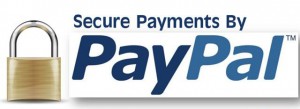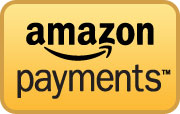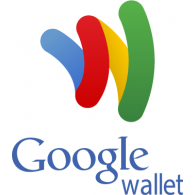In the wake of several major data breaches in 2014, online retailers are paying more attention to customer confidence than ever before. According to a recent survey, 19% of consumers won’t shop online because of security concerns. Of those who do shop online, at least half of them voice concern about security.
Offering an alternative payment option may help you capture customers who are wary of creating new accounts or trusting a new retailer with their payment info. Many customers prefer the convenience and peace of mind they get from using an alternative payment option, and are much more likely to choose a retailer that supports that option. Many ecommerce solutions support alternative payment options right out of the box, so increasing your customers’ confidence and making more sales is probably easier than you think. Here are four alternative payment options you should consider adding to your ecommerce checkout:
 PayPal is the top alternative payment system used by online retailers making it a no-brainer. PayPal has over 130 million active registered accounts, and is available in 193 markets and 26 currencies. Customers can link their credit or debit card, their bank account, or use funds stored in PayPal. It is free for merchants to open a PayPal account, and they pay 2.9% per sale and a $.30 processing fee, which is usually reduced with a high volume of transactions.
PayPal is the top alternative payment system used by online retailers making it a no-brainer. PayPal has over 130 million active registered accounts, and is available in 193 markets and 26 currencies. Customers can link their credit or debit card, their bank account, or use funds stored in PayPal. It is free for merchants to open a PayPal account, and they pay 2.9% per sale and a $.30 processing fee, which is usually reduced with a high volume of transactions. Formerly known as Checkout by Amazon, Amazon Payments have the same merchant fees as Paypal. The difference is that customers can use the credit card information stored in their Amazon accounts to pay for products on your online store. Amazon payments has over 215 million active customer accounts.
Formerly known as Checkout by Amazon, Amazon Payments have the same merchant fees as Paypal. The difference is that customers can use the credit card information stored in their Amazon accounts to pay for products on your online store. Amazon payments has over 215 million active customer accounts. Google Wallet allows customers to digitally store their credit card information and have access to it from wherever they shop. Google Wallet also has the ability for merchants to create a fast checkout experience for their mobile sites and apps with Google Wallet Instant Buy. Setting up Google Wallet is free for merchants.
Google Wallet allows customers to digitally store their credit card information and have access to it from wherever they shop. Google Wallet also has the ability for merchants to create a fast checkout experience for their mobile sites and apps with Google Wallet Instant Buy. Setting up Google Wallet is free for merchants. Apple Pay is the fastest-growing mobile payment system. It operates out of the iPhone’s Passbook app and lets a customer add a credit or debit card from an iTunes account by entering the card’s security code. A customer can also add a new card by using the phone’s camera to capture all the information. Apple Pay is used in brick and mortar stores and mobile apps, but is currently not an option for ecommerce checkout.
Apple Pay is the fastest-growing mobile payment system. It operates out of the iPhone’s Passbook app and lets a customer add a credit or debit card from an iTunes account by entering the card’s security code. A customer can also add a new card by using the phone’s camera to capture all the information. Apple Pay is used in brick and mortar stores and mobile apps, but is currently not an option for ecommerce checkout.
Because the brands associated with these alternative payment options have been frequently used and consistently trusted by many online shoppers, offering these options at checkout can help give customers the confidence they need to complete their transactions. For more specific advice on which alternative payment methods might best meet the needs of your customers, contact Starkmedia.